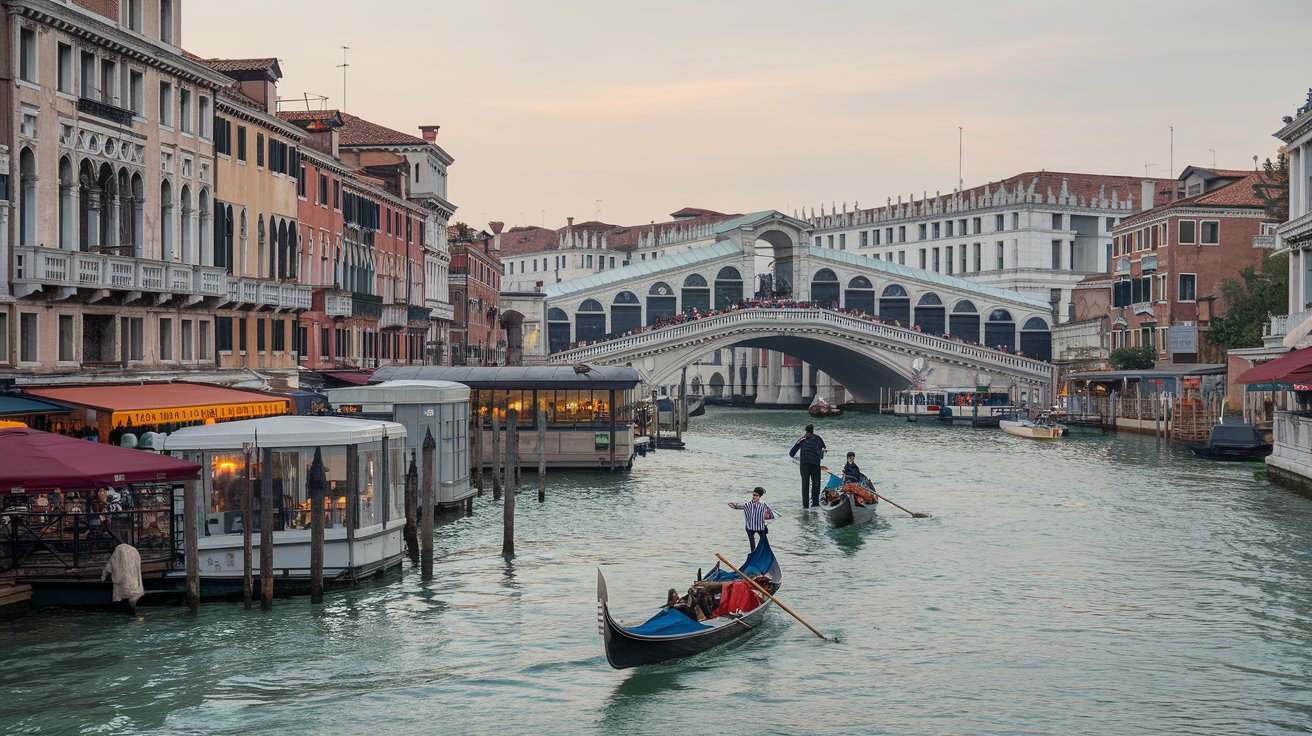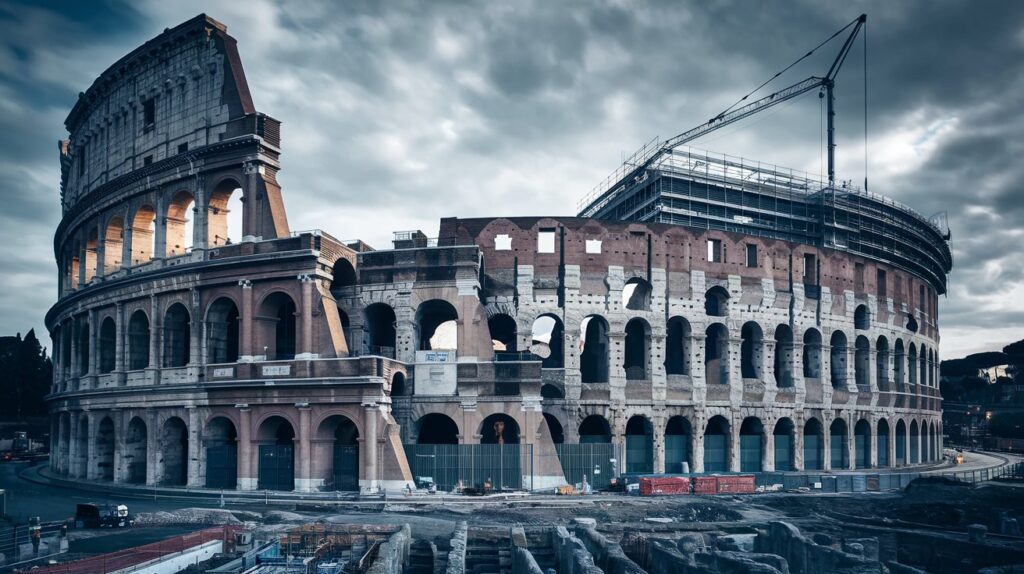Italy, country of history, culture, and breathtaking landscapes, has experienced several economic shocks during the last ten years. Impacts of the global financial shock of 2008 have lately been replaced with panic caused by COVID-19. However, with regard to the rhythm of the Italian economy, everything is still out of pace with its pre-crisis rhythm. Everything seems to become completely transformative for 2024. Today, the country is ready to produce hopeful indicators of growth since a spree of reforms, funds acquired from the EU, and resilience from key sectors such as tourism, manufacturing, and renewable energy buttress the revival.
In this article, we analyze Italy’s economic growth in 2024. As part of this analysis, we delve into what fuels the growth and what is laggardly behind it. Moreover, we attempt to portray personal stories that depict the impact of such changes on Italians’ lives.
## Battles Through the Economy prior to 2024
Against this backdrop, therefore, some perspective on the context in which this economic revival is happening will be useful. For two decades, Italy has undoubtedly been one of the slowest European economies, cradled with low productivity, a mighty public debt, and a greying population. Moreover, Italy’s GDP fell by a whopping 8.9% in 2020 due to the pandemic, one of the largest drops among the European Union’s member-states.
I vividly recall sitting in this very small shop of the local family in Rome at the end of 2019, when the pandemic hadn’t yet gotten bad, while listening to Maria run the shop for over 30 years in the leather goods shop of her family. “We have survived the ups and downs of the economy for a very long time,” she said. “But this feels different.”. One gets the feeling that people are spending less than they used to, and business is getting more and more challenging by the day. What she said was prophetic since the situation at hand was only going to deepen the already precarious economy presented by the pandemic.
There is, however, new hope opening in 2024. The International Monetary Fund had forecasted that Italy’s economic growth for 2024 would be positive as GDP is set to be increased by around 1.2%. Helped by reforms and, at least on the political side, strengthened support coming from the EU’s institutions and the resilience of some sectors, it is hoped that Italy’s economy shall once again experience a turn for the better.

## Main Reasons Behind Italy’s Economy Rebound until 2024
### 1. The European Union Recovery and Resilience Facility (RRF)
The most considerable catalyst to Italy’s recovery is the Recovery and Resilience Facility of the European Union, a plan under NextGenerationEU. Italy will be the biggest beneficiary of this fund by receiving more than €200 billion to help the country update its economy. Amounts going into critical infrastructure initiatives, digital transformation that the country should undergo, and green initiatives are among them.
And by the time I made it back to Italy in early 2024, I could feel the difference. Construction cranes began blanketing the cities’ skylines—Milan, Naples, among others. The locals were talking about jobs and opportunities. Young engineer Luca had just been hired to work on a project upgrading the country’s high-speed rail network. “Without the EU funds, this project wouldn’t exist,” he explained. “It is giving me-and many others-the chance to build my future right here in Italy, and not have to go overseas.”
2. Revival of Tourism and Hospitality
The tourism sector of Italy, which contributes approximately 13% of the gross domestic product of Italy, was severely battered by the pandemic. International travel restrictions coupled with nationwide lockdowns in Italy led to a spectacular collapse of tourists traveling to Italy. However, tourists from both European and overseas destinations have returned with renewed energy in 2024, further boosted by relaxed restrictions on traveling and renewed interest in Italy’s cultural assets.
I walked through Venice this spring with Filippo, a gondolier who spent most of last year and 2020 out of work. “I didn’t know if we’d ever see the tourists come back,” he confessed. “But now, the canals are busy again, and my bookings are full for the first time in years.” To Filippo and many others, returning tourists are not only a boon for those who make their living from tourism dollars but also refreshing for the local businesses.

The Italian tourism product was diversified as well. The forgotten regions of Calabria and Abruzzo are increasingly becoming crowded for those seeking alternative, less crowded destinations that hold possibilities for economic development in hitherto unheralded regions.
### 3. Green and Digital Transformation
Another significant reason for Italy’s economic recovery is the commitment to entering digital and green transformation. Indeed, a big share of RRF funds is now directly channeled into focused projects on renewable energy, sustainable infrastructure, and the industrial digitalization of the economy.
Traditionally speaking, Italy has been one of the more underdigitized countries in Europe. But 2024 will be the change of tide. Internet infrastructure broadband coverage is being rolled out across rural areas, while small and medium-sized enterprises are being encouraged to exploit digital technologies. Indeed government reports indicate that close of 2024 more than 70% of Italy’s SMEs will enact some form of digital transformation.
The other very important area is renewable energy. Italy is investing very heavily in wind and solar power in an attempt to de-emphasize the dependence of the country on imported energy sources and reduce carbon emissions. My cousin works for one of the companies in Sicily that deals with renewable energy, and she reported to me their scaled-up operations. “This is the future,” she said to me excitedly. “We are working on projects that not only help Italy take the right step forward toward energy independence but also help generate jobs for the next generation.”
4. Manufacturing sector’s resilience
Italian luxury goods, automotive, and machinery sectors are the mainstay of investments in the country’s economy over many years. Despite how resilient it has been during the pandemic scenario, the sector remains exceptionally good in 2024 largely driven by growing demand worldwide for quality Italian products.
Italian exports have also increased, especially in fashion, food, and technology. Among these is the luxury brands of Gucci and Ferrari, which have really taken a different turn in regards to their sales worldwide. Even the machinery and equipment manufacturers in Italy are benefitting because globalization and digitalization of agriculture, construction, among others have taken place.
So I was recently talking to a friend in the fashion business in Florence, who told me that demand for “Made in Italy” products has never been stronger. “People are willing to pay a premium for quality,” she said. “We’ve had clients from the US and Asia placing orders months ahead of time. It’s as if the whole world is looking to Italy for the best of the best.”.
## Challenges Still Ahead
All this notwithstanding, several challenges still present themselves in the full realization of Italian economic recovery. Italy still has a number of structural problems that may hinder sustainable growth.

### 1. High Public Debt
Italy is one of the world’s leading nations in public debt with values over 145% of its GDP. Influxes from the EU and reforming its economy cushion the blow but the country will have to continue to content with this problem if any growth is truly long-lasting. The government will have a delicate balancing act: reducing debt burdens without cutting too much of the critical public spendings on health, education, or infrastructure.
2. Youths in a Dilemma
Unemployment is the leading challenge concerning youths in Italy, at a proportion of 24%. Although the economic recovery through new job creations, many youths have not stabilized on any job in Italy. This in itself risks the Italian trend of losing a generation to unemployment or under-employment unless altered.
I still remember a conversation that once took place with an Italian university graduate in Rome, who had spent more than a year searching for work. “It is frustrating,” she said. “They tell us to be educated, but then we find that jobs aren’t there anymore. My friends have all moved to Germany or to work in the UK.”
### 3. Aging Population
Another long-term concern for Italy is that the country is an aging nation. The depression in birth rate and the raising of the retirement ages are pushing the weight of the strain on pension and healthcare systems of the country. This demographic shift may limit future economic growth unless a change in policy and incentives to younger families can counterbalance the effects of the change.
## Conclusion: Way Ahead for Italy
This way, Italian economic growth in 2024 is a resilience, adaptability, and opportunity from much support flowing into the country in the wake of EU supports; renewed tourism interests; and basically strong manufacturing sectors. Digital and green transformations are underpinning change toward a more sustainable future.
Italy also suffers from some more serious challenges: the public debt is very high, unemployment is too high, largely referring to young people, and population aging.
Forward to Italy: now, and the economic recovery was certainly a story of numbers and statistics, but behind that lay people-like Maria, Luca, Filippo, and the tens of thousands more who are now working hard to get their lives and their livelihoods back on an even keel. If Italy can sustain this trajectory of reform and innovation, then there is every reason to believe the economy will emerge stronger and more resilient than ever.







